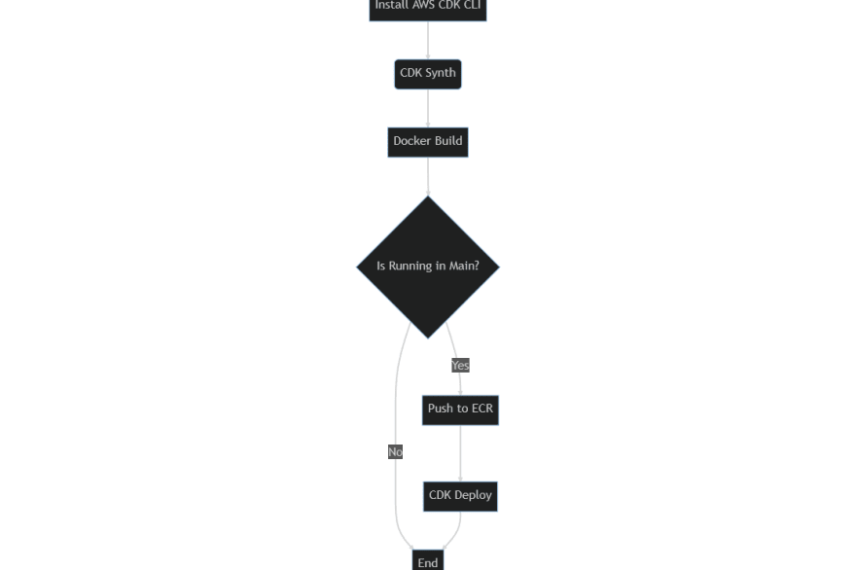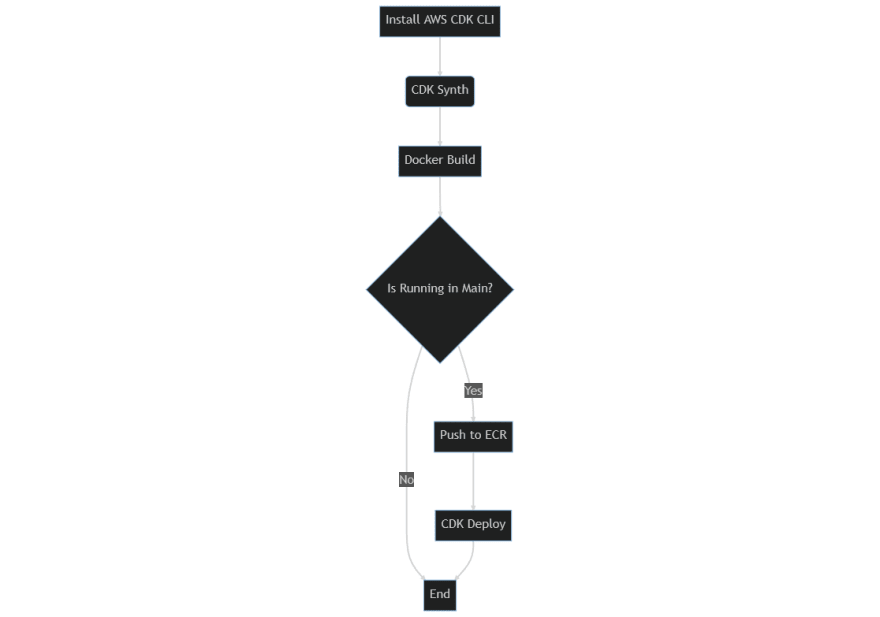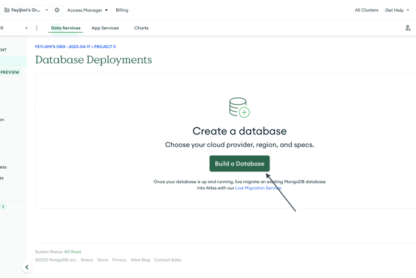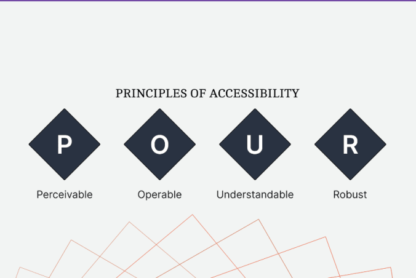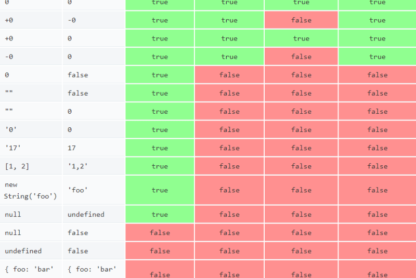What’s the update?
Azure DevOps Flow Updates
I’ve updated the flow and added a step to run the cdk deploy command.
I separate the build & deploy into two templates. I include the templates in my pipelines.
- The pipelines (azure-pipelines.yml)
trigger:
- main
pr:
- main
variables:
- group: 'AWS'
pool:
vmImage: ubuntu-22.04
parameters:
- name: awsCredentials
displayName: AWS Credentials
type: string
default: 'AWS-Dev-AssumeRole'
- name: region
displayName: AWS Region
type: string
default: 'ap-southeast-1'
steps:
- template: build.yml
parameters:
awsCredentials: ${{ parameters.awsCredentials }}
region: ${{ parameters.region }}
- ${{ if and(ne(variables['Build.Reason'], 'PullRequest'), eq(variables['Build.SourceBranch'], 'refs/heads/main')) }}:
- template: deploy.yml
parameters:
awsCredentials: ${{ parameters.awsCredentials }}
region: ${{ parameters.region }}
parameters:
- name: awsCredentials
displayName: AWS Credentials
type: string
default: 'AWS-Dev-AssumeRole'
- name: region
displayName: AWS Region
type: string
default: 'ap-southeast-1'
steps:
- script: npm install -g aws-cdk
displayName: 'Install AWS CDK'
- script: cd SimplePasswordManagerService.Infra && cdk synth
displayName: 'CDK Synth'
- task: Docker@2
displayName: 'Build Docker Image'
inputs:
command: 'build'
Dockerfile: 'Dockerfile'
repository: 'spms'
tags: '$(Build.BuildId)'
parameters:
- name: awsCredentials
displayName: AWS Credentials
type: string
default: "AWS-Dev-AssumeRole"
- name: region
displayName: AWS Region
type: string
default: "ap-southeast-1"
steps:
- task: ECRPushImage@1
displayName: "Push Image to ECR"
inputs:
awsCredentials: "${{ parameters.awsCredentials }}"
regionName: "${{ parameters.region }}"
sourceImageName: "spms"
sourceImageTag: "$(Build.BuildId)"
repositoryName: "spms"
pushTag: "$(Build.BuildId)"
- script: cd SimplePasswordManagerService.Infra && cdk deploy SimplePasswordManagerServiceInfraStack --parameters "imageTag=$(Build.BuildId)"
displayName: CDK Deploy
env:
AWS_ACCESS_KEY_ID: $(AWS_ACCESS_KEY_ID)
AWS_SECRET_ACCESS_KEY: $(AWS_SECRET_ACCESS_KEY)
AWS_DEFAULT_REGION: ${{ parameters.region }}
CDK Structures!
I move the ECR provisioner to SpmsRepo class (different Stack). I add some setup to the previous stack:
- Read created ECR.
- Read created Secrets from Secret Manager.
- Read the parameter of
imageTagand provision App Runner Service.
Note: I delete the previous stack. You might not do that in your production! I’m still experimenting, so I’m fine with losing the data.
The pipeline will provide the imagesTag. Anyway, currently, I consider this pipeline as a Development environment. It will automatically deploy the application to the App Runner. I’m going to add the release pipeline for the next post.
You can look at my cdk codes.
using Amazon.CDK;
using Amazon.CDK.AWS.AppRunner.Alpha;
using Amazon.CDK.AWS.ECR;
using Constructs;
using System.Collections.Generic;
namespace SimplePasswordManagerService.Infra {
public class SimplePasswordManagerServiceInfraStack : Stack {
internal SimplePasswordManagerServiceInfraStack(Construct scope, string id, IStackProps props = null) : base(scope, id, props) {
// 0.0 ECR
var repository = Repository.FromRepositoryName(this, "spms-ecr", "spms");
// 1.0 AppRunner
var appRunnerSecret = Amazon.CDK.AWS.SecretsManager.Secret.FromSecretNameV2(this, "apprunner-secret", "dev/AppRunner/spms");
var imageTag = new CfnParameter(this, "imageTag", new CfnParameterProps {
Type = "String",
Description = "Target tag"
});
var appRunner = new Service(this, "spms-apprunner", new ServiceProps {
Source = Source.FromEcr(new EcrProps {
Repository = repository,
ImageConfiguration = new ImageConfiguration {
Port = 80,
EnvironmentSecrets = new Dictionary<string, Secret> {
{"Authentication__Microsoft__ClientId", Secret.FromSecretsManager(appRunnerSecret, "Authentication__Microsoft__ClientId")},
{"Authentication__Microsoft__ClientSecret", Secret.FromSecretsManager(appRunnerSecret, "Authentication__Microsoft__ClientSecret")},
{"ConnectionStrings__mongo", Secret.FromSecretsManager(appRunnerSecret, "ConnectionStrings__mongo")},
},
EnvironmentVariables = new Dictionary<string, string> {
{"ASPNETCORE_FORWARDEDHEADERS_ENABLED", "true" }
}
},
TagOrDigest = imageTag.ValueAsString
}),
});
new CfnOutput(this, "output-spms-apprunner-url", new CfnOutputProps {
Value = appRunner.ServiceUrl
});
}
}
}
Repositories
My Application is open-source. Feel free to see the pipelines and the CDK codes! Feel free to give some feedback.
Simple Password Manager Web Service
Simple Password Manager Service
Tools
.NET
